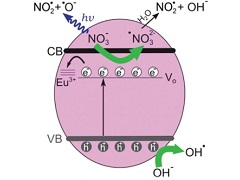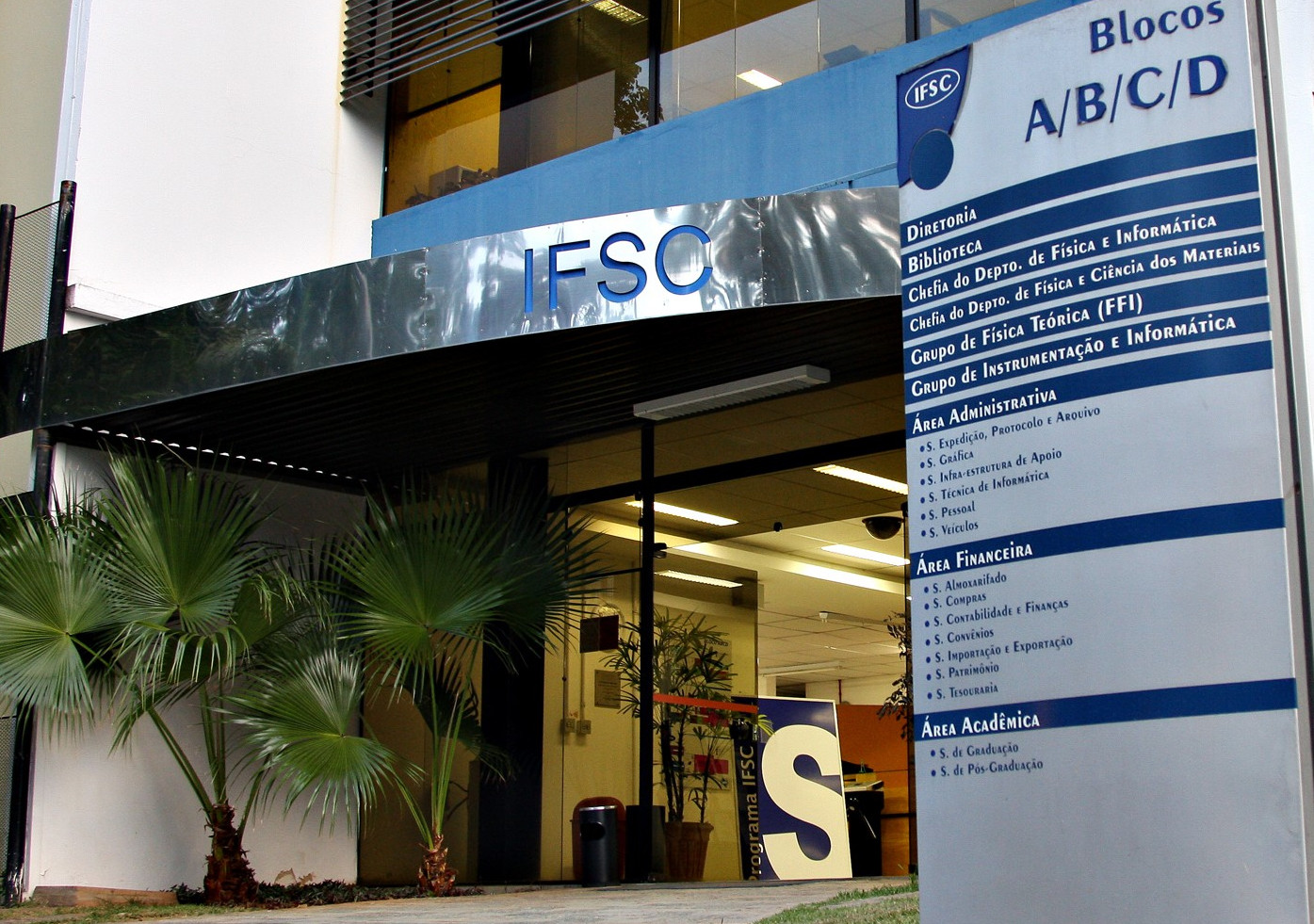Nitrate-assisted photocatalytic efficiency of defective Eu-doped Pr(OH)3 nanostructures.
AKRABIC, S.; ARAÚJO, V. D.; PASSACANTANDO, M.; BERNARDI, Maria Inês Basso; TOMIC, N.; DOJCINOVIC, B.; MANOJLOVIC, D.; CALIJA, B.; MILETIC, M.; DOHCEVIC-MITROVIC, Z. D.
AKRABIC, S.; ARAÚJO, V. D.; PASSACANTANDO, M.; BERNARDI, Maria Inês Basso; TOMIC, N.; DOJCINOVIC, B.; MANOJLOVIC, D.; CALIJA, B.; MILETIC, M.; DOHCEVIC-MITROVIC, Z. D.
 Abstract: Pr(OH)3 one-dimensional nanostructures are a less studied member of lanthanide hydroxide nanostructures, which recently demonstrated an excellent adsorption capacity for organic pollutant removal from wastewater. In this study, Pr1-xEux(OH)3 (x = 0, 0.01, 0.03, and 0.05) defective nanostructures were synthesized by a facile and scalable microwave-assisted hydrothermal method using KOH as an alkaline metal precursor. The phase and surface composition, morphology, vibrational, electronic and optical properties of the as-prepared samples were characterized by X-ray diffraction (XRD), X-ray photoelectron spectroscopy (XPS), inductively coupled plasma optical emission spectrometry (ICP-OES), transmission electron microscopy (TEM), field emission scanning electron microscopy (FE-SEM), Raman, infrared (IR), photoluminescence (PL), and diffuse reflectance spectroscopy (DRS). It was deduced that the incorporation of Eu3+ ions promoted the formation of oxygen vacancies in the already defective Pr(OH)3, subsequently changing the Pr(OH)3 nanorod morphology. The presence of KNO3 phase was registered in the Eu-doped samples. The oxygen-deficient Eu-doped Pr(OH)3 nanostructures displayed an improved photocatalytic activity in the removal of reactive orange (RO16) dye under UV-vis light irradiation. An enhanced photocatalytic activity of the Eu-doped Pr(OH)3 nanostructures was caused by the synergetic effect of oxygen vacancies and Eu3+ (NO3-) ions present on the Pr(OH)3 surface, the charge separation efficiency and the formation of the reactive radicals. In addition, the 3% Eu-doped sample exhibited very good adsorptive properties due to different morphology and higher electrostatic attraction with the anionic dye. Pr1-xEux(OH)3 nanostructures with the possibility of tuning their adsorption/photocatalytic properties present a great potential for wastewater treatment. Abstract: Pr(OH)3 one-dimensional nanostructures are a less studied member of lanthanide hydroxide nanostructures, which recently demonstrated an excellent adsorption capacity for organic pollutant removal from wastewater. In this study, Pr1-xEux(OH)3 (x = 0, 0.01, 0.03, and 0.05) defective nanostructures were synthesized by a facile and scalable microwave-assisted hydrothermal method using KOH as an alkaline metal precursor. The phase and surface composition, morphology, vibrational, electronic and optical properties of the as-prepared samples were characterized by X-ray diffraction (XRD), X-ray photoelectron spectroscopy (XPS), inductively coupled plasma optical emission spectrometry (ICP-OES), transmission electron microscopy (TEM), field emission scanning electron microscopy (FE-SEM), Raman, infrared (IR), photoluminescence (PL), and diffuse reflectance spectroscopy (DRS). It was deduced that the incorporation of Eu3+ ions promoted the formation of oxygen vacancies in the already defective Pr(OH)3, subsequently changing the Pr(OH)3 nanorod morphology. The presence of KNO3 phase was registered in the Eu-doped samples. The oxygen-deficient Eu-doped Pr(OH)3 nanostructures displayed an improved photocatalytic activity in the removal of reactive orange (RO16) dye under UV-vis light irradiation. An enhanced photocatalytic activity of the Eu-doped Pr(OH)3 nanostructures was caused by the synergetic effect of oxygen vacancies and Eu3+ (NO3-) ions present on the Pr(OH)3 surface, the charge separation efficiency and the formation of the reactive radicals. In addition, the 3% Eu-doped sample exhibited very good adsorptive properties due to different morphology and higher electrostatic attraction with the anionic dye. Pr1-xEux(OH)3 nanostructures with the possibility of tuning their adsorption/photocatalytic properties present a great potential for wastewater treatment. | |
| Physical Chemistry Chemical Physics |
| v. 19, n. 47, p. 31756-31765 - Ano: 2017 |
| Fator de Impacto: 4,123 |
| http://dx.doi.org/10.1039/c7cp06440c |  @article={002863470,author = {AKRABIC, S.; ARAÚJO, V. D.; PASSACANTANDO, M.; BERNARDI, Maria Inês Basso; TOMIC, N.; DOJCINOVIC, B.; MANOJLOVIC, D.; CALIJA, B.; MILETIC, M.; DOHCEVIC-MITROVIC, Z. D.},title={Nitrate-assisted photocatalytic efficiency of defective Eu-doped Pr(OH)3 nanostructures},journal={Physical Chemistry Chemical Physics},note={v. 19, n. 47, p. 31756-31765},year={2017}} @article={002863470,author = {AKRABIC, S.; ARAÚJO, V. D.; PASSACANTANDO, M.; BERNARDI, Maria Inês Basso; TOMIC, N.; DOJCINOVIC, B.; MANOJLOVIC, D.; CALIJA, B.; MILETIC, M.; DOHCEVIC-MITROVIC, Z. D.},title={Nitrate-assisted photocatalytic efficiency of defective Eu-doped Pr(OH)3 nanostructures},journal={Physical Chemistry Chemical Physics},note={v. 19, n. 47, p. 31756-31765},year={2017}} |





